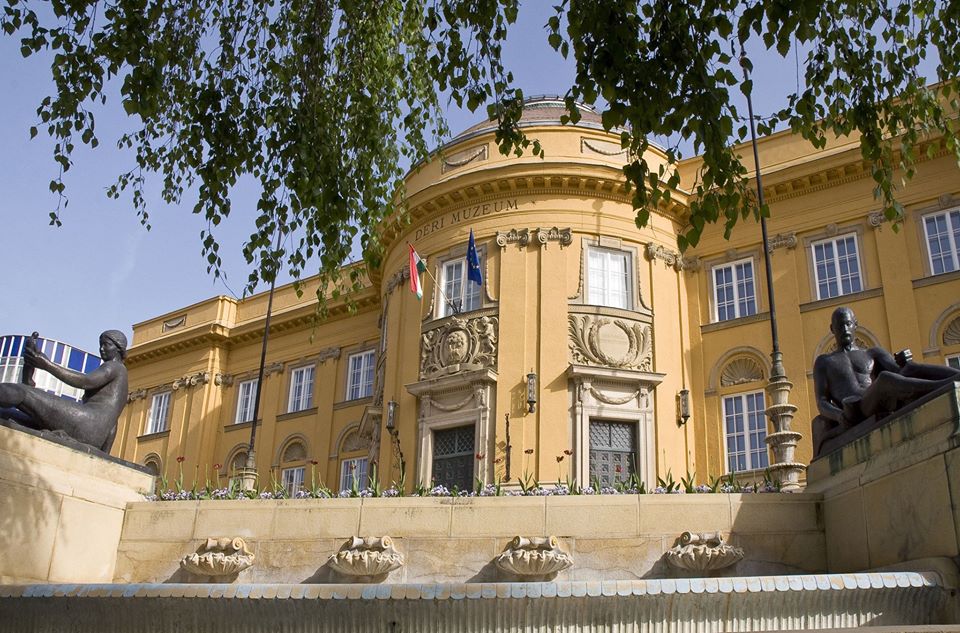The site of today’s Déri Square was once a pond known as Paptava, which literally translates as “Priest’s lake”. From 1840 the first of the larger botanical gardens were located here, built for the natural history education of college students. By 1920, our pedunculate, European oak tree would have been only around 30 years old.
At the same time, the silk factory ower Frigyes Déri donated his antique collection covering the material of three parts of the world to Debrecen. Although Déri wanted to bear the construction costs, his unexpected death in 1924 put a stop to this.
The city built the museum on its own in the spring of 1928, written in golden letters on its facade: “ARS LONGA VITA BREVIS EST” (Life is finite, art is eternal). This period marks the current state of the square with the opening of the Déri Museum in 1928. In the square sunk in front of the building, there is a bubbling fountain, and above it, there are four large allegorical bronze statues of Ferenc Medgyessy representing Ethnography, Art, Science, Archeology, which are symbolic embodiments of the museum’s intellectual content.

The sculpture, which symbolizes archeology, won a grand prize at the 1937 Paris World’s Fair. This most beautiful and intimate little park is known as Déri Square, and is enjoyed by both young and old, civic townspeople and tourists alike.
Academician János Barta, a professor at Lajos Kossuth University, a school-creating personality of Hungarian literary studies, and an outstanding figure of the intellectual life of Debrecen city, lived in one of the flats overlooking the square and in view of the oak tree. This Pedunculate oak tree species is one of the most important and characteristic tree species in Hungary.
This specimen is located on the right side of the square, its imposing, royal appearance is eye-catching, and due to its capital size, it is the largest and most beautiful protected tree in the city center. It’s like a living history book, that if it could speak you could talk about much of the past of Calvinist Rome. This tree saw the museum being rebuilt, as well as the fact that on the back stairs of the neighboring Episcopal Palace, the servants wore coal on winter mornings.
This tree witnessed November 4, 1956, when tanks appeared and smashed the opposite post office building, assuming a resistance center was operating from there.
It watched when the monumental works of the trilogy of Christ by our greatest painter, Mihály Munkácsy, were placed in the window of the dome hall of the museum.
It was hit by hard frosts and scorched by the summer sun, it suffered the chiseling of woodpeckers and squirrels pillaging acorns, but it is home to and still provides many birds whose voices greet those who walk there early in the morning.
Many, many generations of thrushes, finches, and titmouse grew up in the huge canopy. On summer evenings, those sitting in the square can see the bats flying out of their crowns, and the eyed divers on the upper branches can also see the 2017 insect species, the large stag beetle.
Our oak tree can hear the trumpet ringing and drumming in the summer, as military music reverberates around the square in its cool shade. This world hadn’t changed so much. Lovers still carve their monograms on the benches in the park and are sure to smile as he sees that some of the kids are now rushing to school late, just like they did 120 years ago.
In terms of its state of health, although its peaks dry in some places and it does not like late frosts, the living Methuselah of Déri Square thanks it nicely and well. We in Debrecen, love, and take care of it.
Sources:-